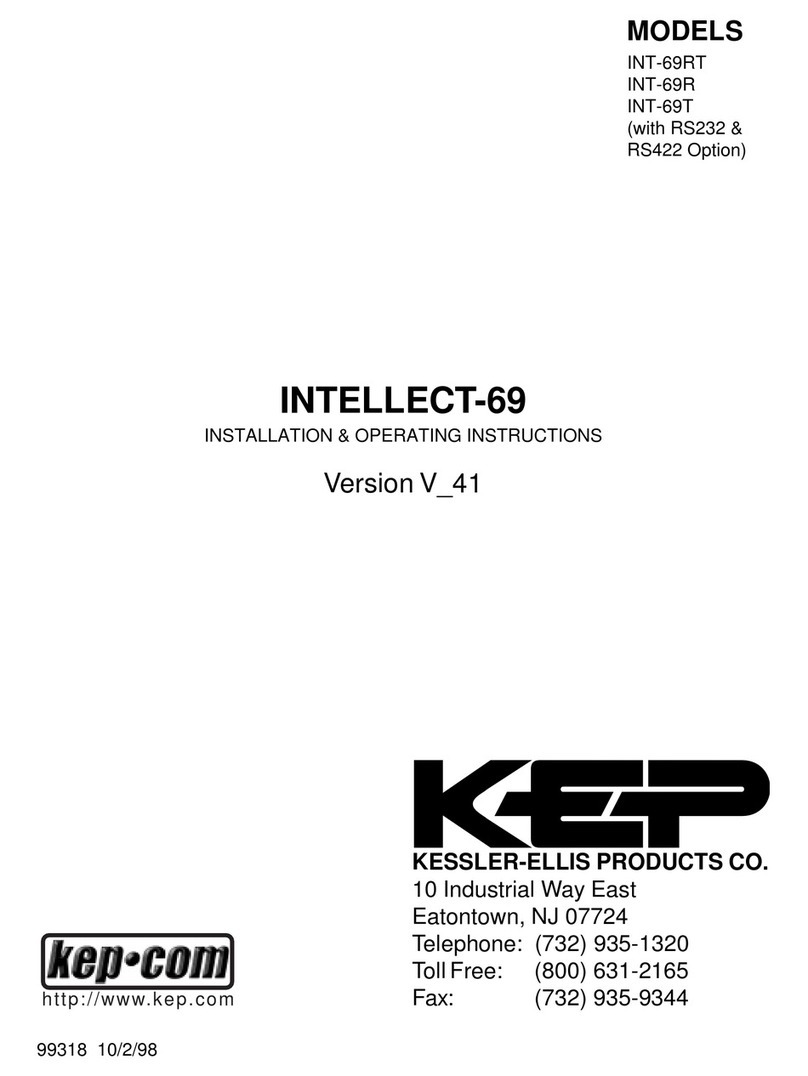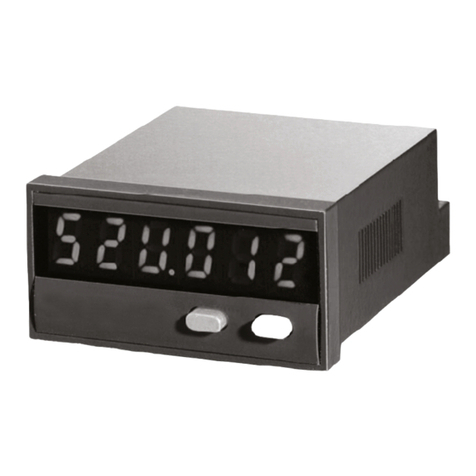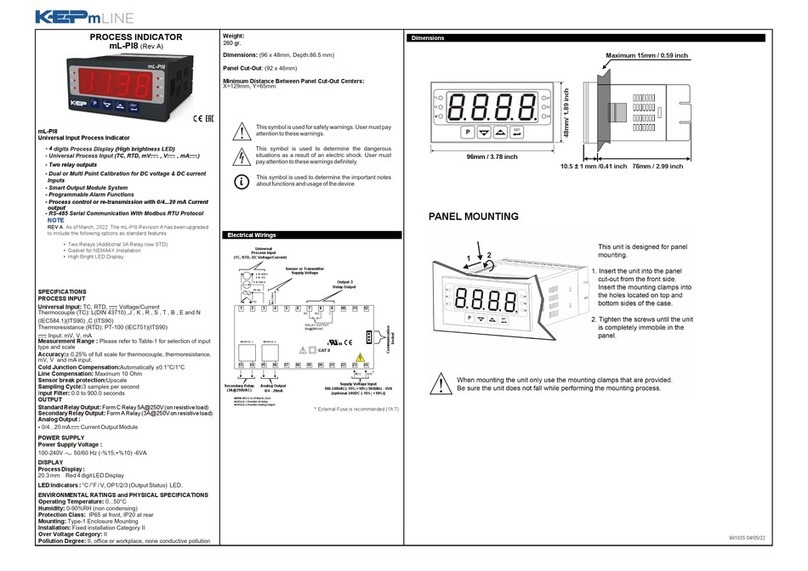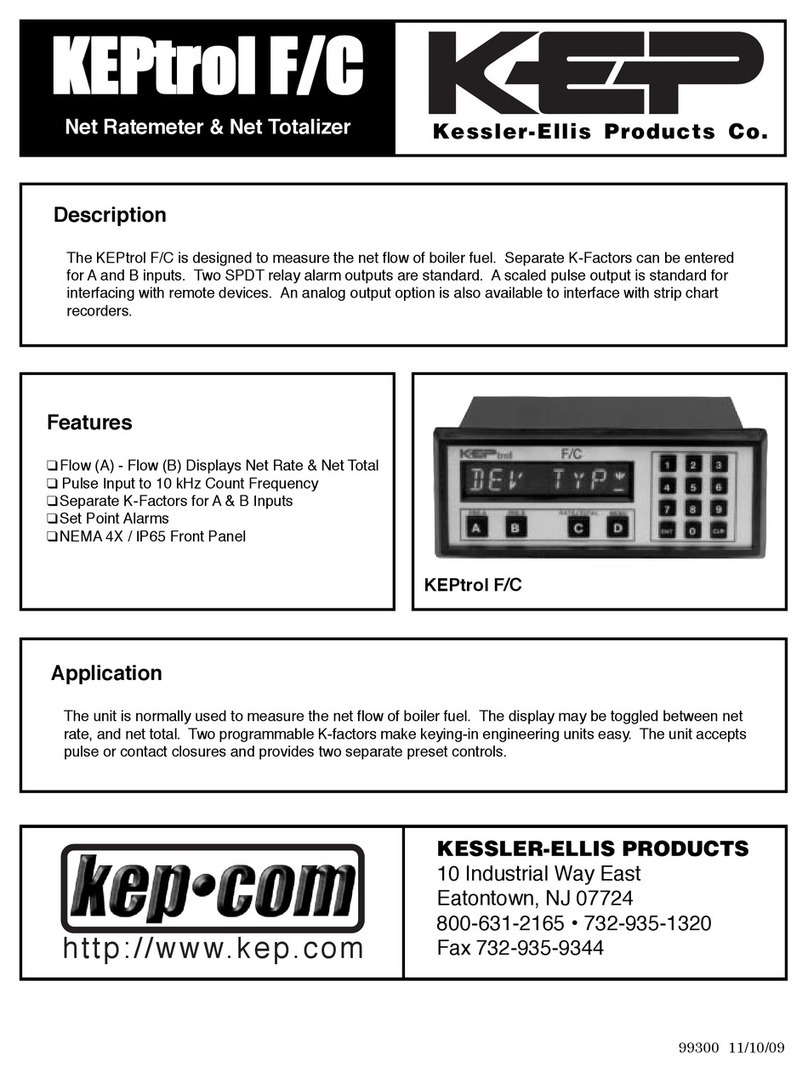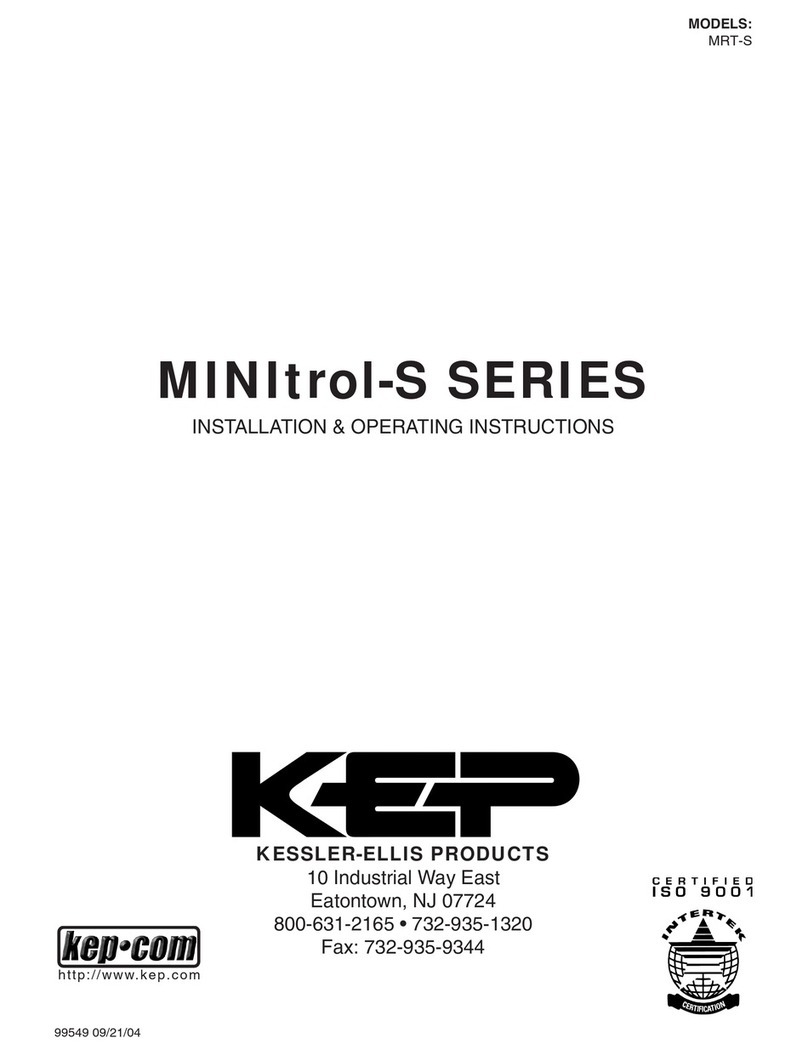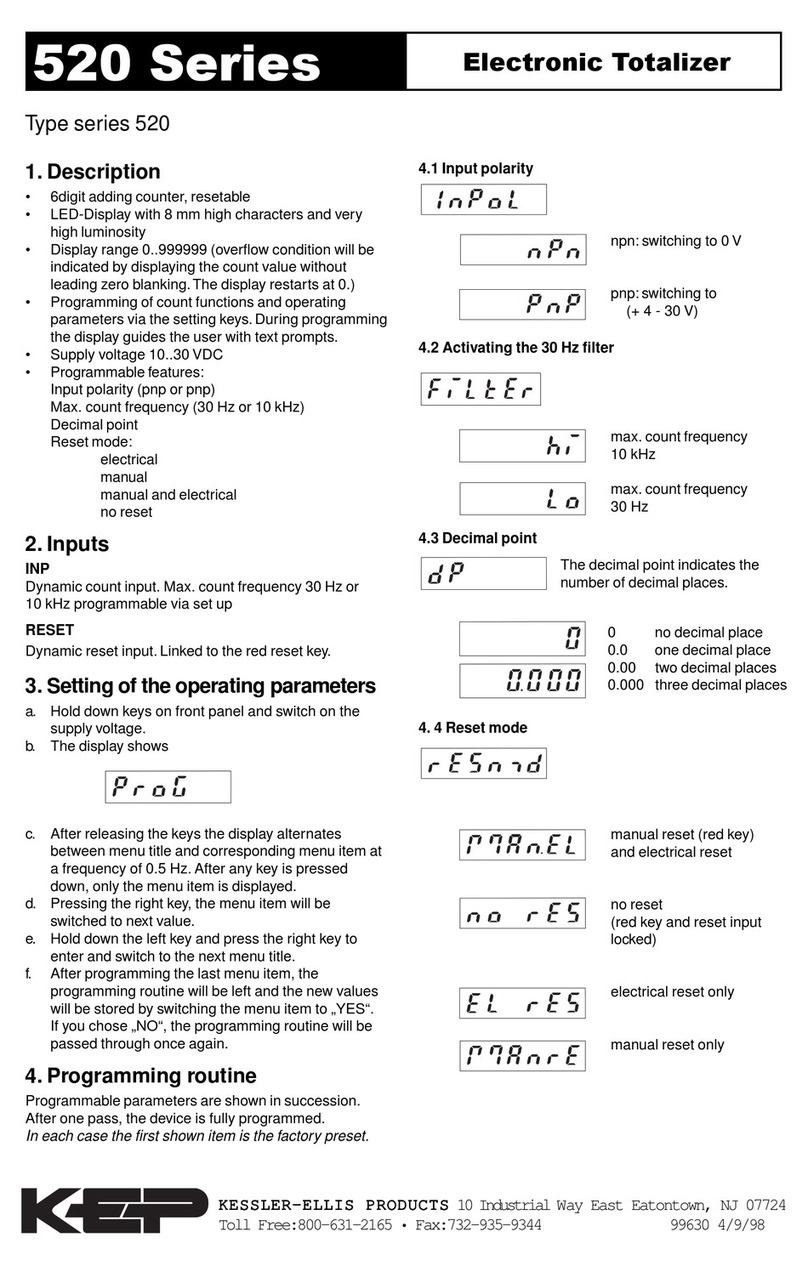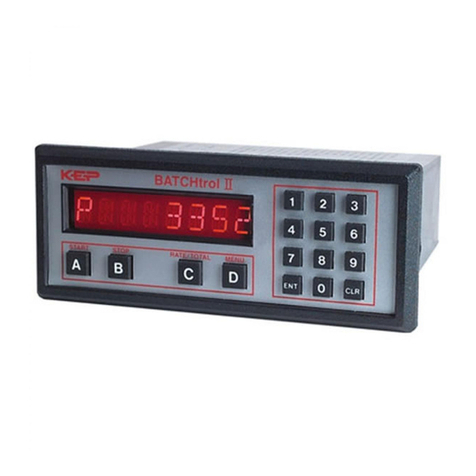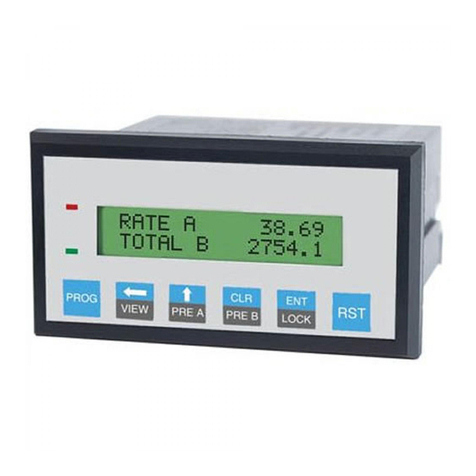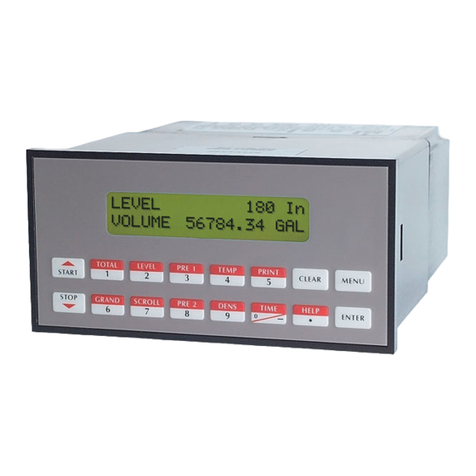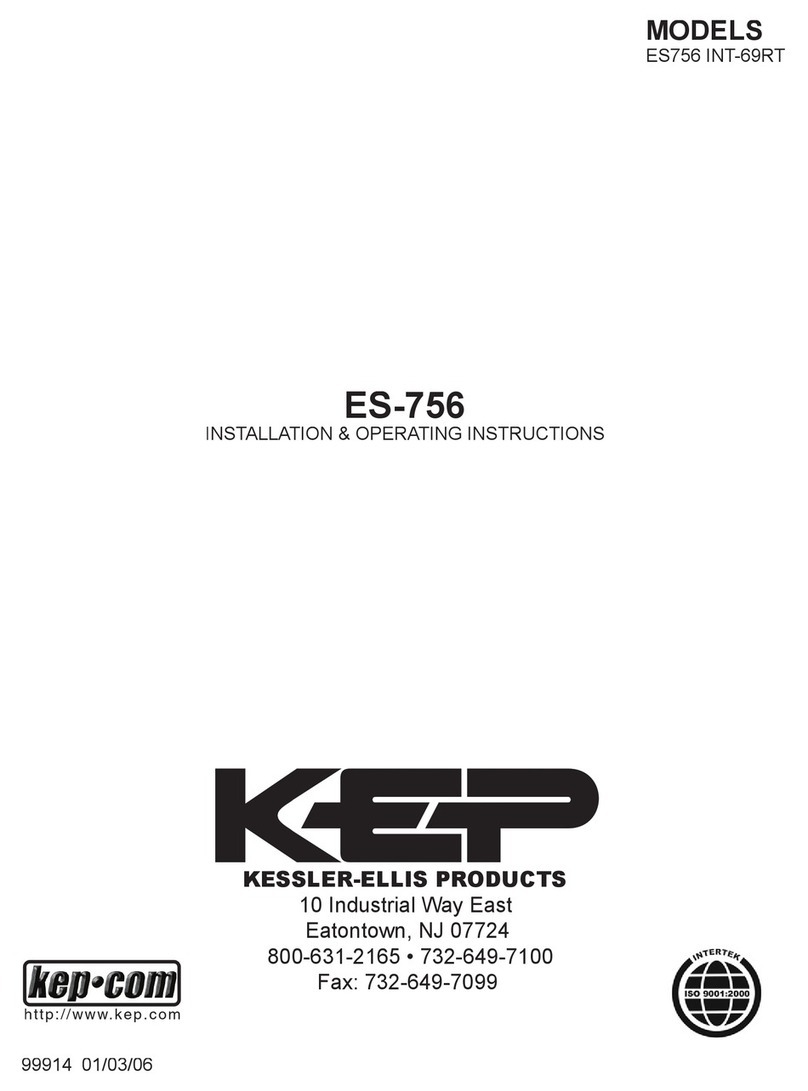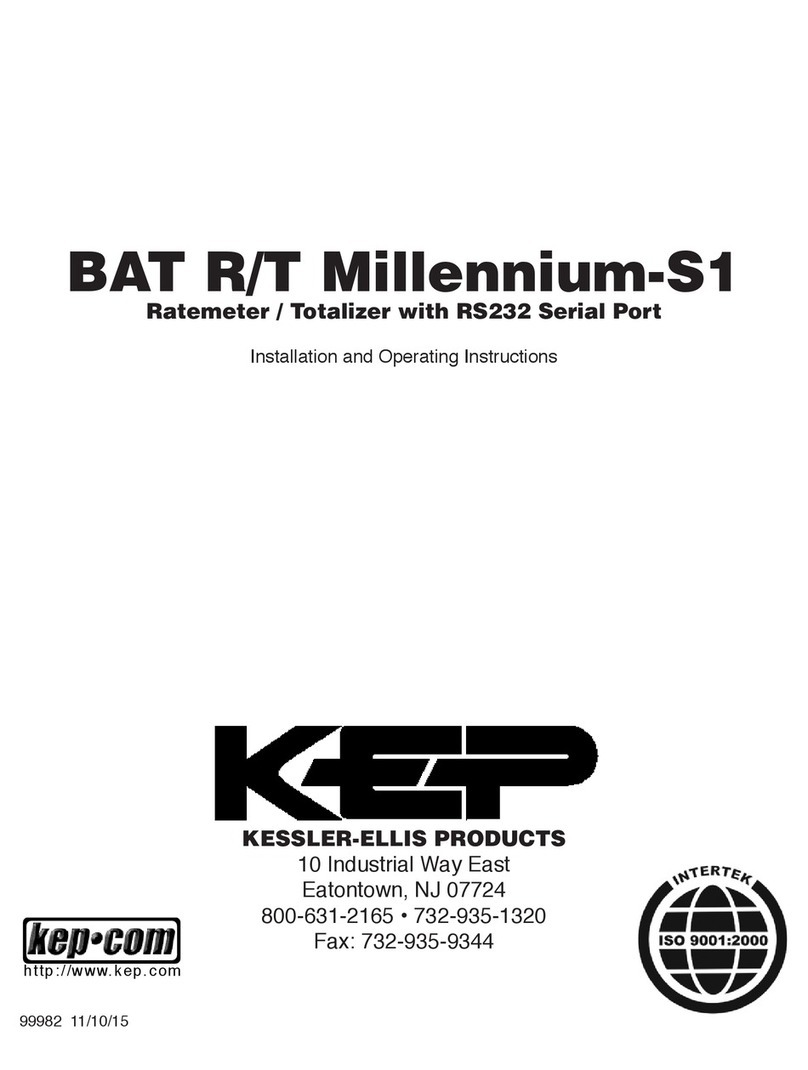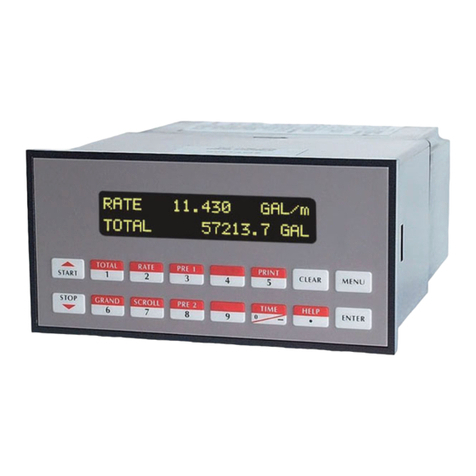
1
Features
• 5 Digit Scaling Factor
• Display Rate, Batch Size and
(Batch Total or Grand Total)
• Second B Relay Programmable for Output at Pre-
warn or selected Batch/Grand Total
• Pulse Input - 10 kHz Max.
• Security Lockout on Flow Sensor Malfunction
• RS422/RS232 Serial Communication
• NEMA 4X / IP65 Front Panel
• 30mV Magnetic Pickup Inputs
• 4-20mA or 0-20mAAnalog Output
Application:
This miniature batcher is ideal for all batching applications. The
display will show Batch Amount, Rate and Batch/Grand Total at the
push of a button. The Start and Stop buttons make batching simple.
Description:
The MINI-Batcher is a 6 digit totalizer and 4.5 digit ratemeter with two
relay outputs. One output is dedicated to the batch amount (Preset
A), the other can be activated for Prewarn or Batch/Grand Total. The
unit can count up to the preset (reset to 0) or down from the preset
(set to preset). Start, Stop and Reset functions can be activated from
the front panel or remote inputs.
An analog output (assignable for Rate or Batch Amount) is available
for data logging.
Up to 99 units can communicate to a host computer on a single RS232
or RS422 loop.
Specications:
Display: 6 digit, 0.55" High LED
Input Power:
110 VAC ± 15% or 12 to 15 VDC
220 VAC ± 15% or 12 to 15 VDC
24 VAC ± 15% or 12 to 15 VDC
Current: 250 mA DC max. or 6.5 VA AC
Output Power: (AC powered units only)
+12 VDC @ 50 mA, unregulated -10 + 50%
Temperature:
Operating:
+32°F (0°C) to +130°F (+54°C)
Storage:
-40°F (-40°C) to +200°F (93°C)
Humidity: 0-90% Noncondensing
Memory: EEPROM stores data for 10 years if power is lost.
Inputs:
3: High Impedance DC pulse input 4-30 VDC (high), Open or
0-1 VDC (low), 10 kΩ imp. 10 kHz max. speed.
3M: Mag. Input, accepts 30mV input (50 V max.) signals 10 KΩ
imp. 5 kHz max.
Stop / Reset:
Front Panel:
STOP/RST button stops batch if batch is running, Resets dis-
played value and control output if batch is stopped.
Remote:
4-30 VDC, positive edge: stops batch if batch is running, Resets
batch amount if batch is stopped.
NOTE: Hold either front or remote reset active to inhibit any start
inputs.
Start:
Front Panel:
START button Starts batch by energizing Relay A (and Relay B if
Prewarn selected).
Remote:
4-30 VDC, positive edge: Starts batch by energizing Relay A (and
Relay B if Prewarn selected).
Scaling Factor (K-Factor): A user programmable K-Factor is used
to convert the input pulses to engineering units. The 5 digit K-Factor
divider, with decimal keyed into any position, allows easy direct entry
of any K-Factor from 0.0001 to 99999.
Presets: Two control outputs are provided. A 5 digit value can be
entered for both presets. The decimal point location is the same as
the counter (No decimal in Batch Total counter).
PRESET A:
The preset A output is dedicated to the batch amount. When
START is activated, Relay A will energize and remain on until
the batch is complete or the batch is stopped.
PRESET B:
The preset B output can be programmed to activate as a Prewarn
(for two stage batch control) or activate on Batch Total or Grand
Total (selectable).
When set for PREWARN, Relay B will energize when START is
activated and drop out at Prewarn number before preset.
When set for Batch Total or Grand Total, Relay B will activate
when the batch total or grand total counts up to preset B amount.
The output ON time can be set for a duration (0.01 to 99.99 sec.)
or latched (0.00 setting). If a value other than 0.00 is set for the
duration, the batch total or grand total will auto-reset at preset B.
Control Outputs:
Relays:
2 each N.O. Relay; 5 Amps 120/240 VAC or 28 VDC. (N.C. relay
contacts and NPN transistor output available with solder jumpers.
Transistor output is internally pulled up to 10 VDC through relay
coil, sinks from 10 VDC to 0.5 V @ 100 mA)
Analog Output:
An optional 4-20mA (0-20mA) output is available for the Mini-
Batch series. The output can be programmed to track rate or
batch amount. Connections are via a 2 terminal pluggable screw
connector. Programming is accomplished by using the front
panel in conjunction with rear dip switches. Accuracy: ±.25% FS
worst case. Compliance Voltage: 3 to 30 VDC non inductive.
Lockout: Unauthorized front panel changes can be prevented by en-
tering a user selected 5 digit code. The front panel can be completely
locked out (except Start & Stop) or the preset can remain accessible.
Security: The Security feature is a missing pulse detection to pre-
vent overrun in case of a ow sensor error or broken connection.
The security can be set from 01 to 99 seconds. If a batch is started
and the unit does not receive a signal from the sensor within the set
amount of time the batch will stop and the display will show secure
to warn that an error has occurred. To clear the Security status enter
the Lock code. To disable this feature enter 00 for the secr setting.
SPECIFICATIONS
